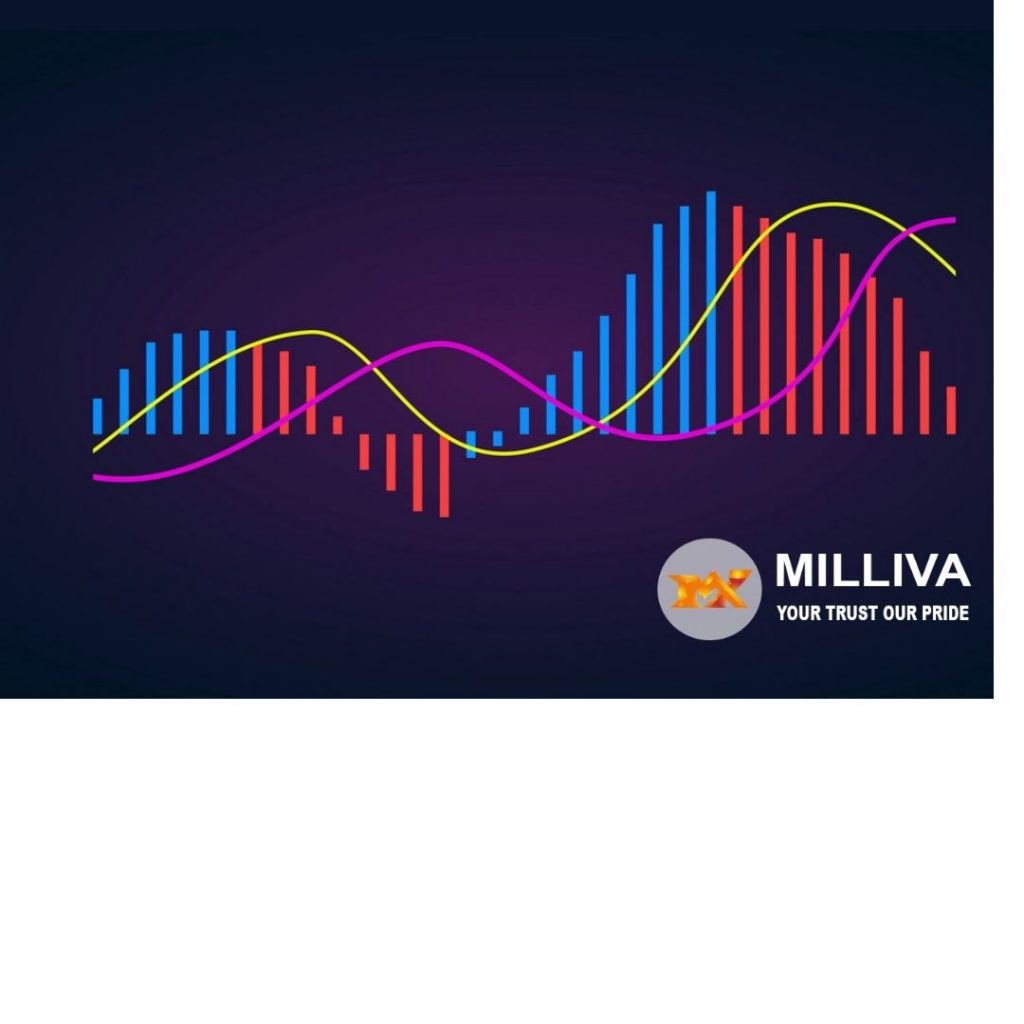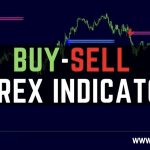Know more about MACD indicator in your trading style

![]()
what is MACD indicator?
Gerald Appel establish the moving average convergence divergence MACD indicator in 1979. And it is one of the most widely use technical indicators in trading. The MACD favored by traders all over the world for its ease of use and versatility. Since employed as a trend or momentum indicator.
A technical indicator called the Moving Average Convergence Divergence (MACD) evaluates the connection between two exponential moving averages. The MACD represented by a blue MACD line, a red signal line, and a green histogram. That depicts the difference (i.e. divergence) between these two lines. The MACD line made out of the difference between two exponentially scaled moving averages. Which are generally 12 and 26 periods long.
In most cases, the signal line is a 9-period exponentially smooth MACD line. These MACD lines are swaying back and forth around the zero line. When the indicator crosses above or below the zero line. The MACD takes on the properties of an oscillator, signaling overbought and oversold zones, respectively.
Purpose of MACD?
The MACD uses the MACD line and the zero line as reference points to calculate momentum or trend strength:
When the MACD crosses above the zero line, it signals the start of an uptrend or bullish confirmation.
When the MACD crosses below the zero line, it signals the start of a decline or bearish confirmation.
Traders may also use the intersection of two MACD lines, as seen in the chart below, as a signal to place buy or sell orders:
Also Traders utilize the MACD line crossing above the signal line as a BUY indication.
Traders utilize the MACD line crossing below the signal line as a SELL indication.

What is the formula for calculating the MACD?
The MACD indicator available on most charting systems and calculated using the default periods indicated above. To make the computation easier for traders, the method below breaks out the numerous components of the MACD.
SIGNAL Line: 9-Period EMA – 12-Period EMA MACD Line: 12-Period EMA – 26-Period EMA
DIFFERENCE BETWEEN THE MACD AND THE SIGNAL LINES HISTOGRAM
The MACD histogram, as previously stated, indicates the difference between two moving average lines. The MACD histogram oscillates above and below the zero line. Which formed by the intersection of the MACD and the signal line. The histogram will have a positive value when the MACD line is above the signal line.
The histogram shown below zero with a negative value when the MACD line passes below the signal line. The histogram’s zero value shows that the two moving averages have crossed, indicating buy/sell signals.
MACD’s drawbacks
Because the MACD indicator works best in a moving market, traders’ usage limited based on their trading style. One of the most significant issues with MACD divergence is that it frequently indicates a probable reversal. When there is no genuine reversal, however, seen as a false signal. Traders must fully comprehend when and how to employ the MACD. This indicator may be tough to utilize for new traders at first.
That is why understanding the nature of the simple moving average (SMA) and the exponential moving average (EMA) is critical (EMA). The MACD contains parameters that may altered to provide nearly infinite variations, which implies that outcomes will vary from person to person.
The MACD’s consistency harmed by its subjective character. When employing the MACD, traders must adhere to two essential rules:
Choose your EMA settings.
Use a suitable timeframe, as the MACD might behave differently depending on the timeframe.
Using MACD to spot a trend
One of the most crucial duties for any technical analysis trader is spotting a trend. While this may appear to be a difficult task, the MACD may be highly useful in this area. When utilizing MACD to determine and enter a trend, there are three steps:
Determine the trend’s direction.
The MACD crossover may used to discover trade opportunities in the direction of the trend.
To control risk, use the MACD zero line.
Determine the trend’s direction.
The 200-day moving average is one method of detecting a trend. If a trader wants to join a trade, he may look at the price chart and use the 200-day moving average to see if prices are frequently trading above the typical range. The EUR/USD chart in the example below demonstrates a strong uptrend, as seen by prices constantly trading above the 200-day moving average. When this occurs, the trader can go on to step two, which involves identifying potential entry locations.
The trader may then begin looking for purchase signals in the same direction as the current trend after the trading bias has been established. When the price is above the 200-day moving average, the MACD crossover may be utilized as a probable entry signal, as seen in the chart above.
The trader may choose to take a long position on the first MACD crossover, as seen in the chart (highlighted on the chart). The MACD line (blue line) is above the signal line (red line) at this time, and the price remains above the 200-day MA.
To control risk, use the MACD zero line.
It’s crucial to remember that while the market is trending, the trend will ultimately exhaust. When a bearish crossing occurs in an uptrend, like in our EUR/USD example, it might indicate that the uptrend’s momentum is weakening and the pair may turn direction.
Our trader who initiated a long position may wish to close it now, but this might just be a brief reversal. When a prospective downturn arises, traders can confirm the negative trend by checking if the MACD line passes below the zero line. They can exit the trade if it does.
MACD may be used to spot the end of a trend.
Both rookie and professional traders choose the trend following method. The majority of traders initiate a trade at the conclusion of a trend, only to have the trend reverse.
Is the MACD indicator capable of assisting traders in identifying a tired trend?
The MACD divergence is a useful tool for detecting trend reversals. When the indicator moves in the opposite direction of the price, a divergence develops, indicating that the trend momentum is diminishing. On the price chart, the DAX 30 is forming a higher high, while the MACD is forming a lower high, which is referred to as a divergence. This is the first hint that the present trend’s momentum is waning. Investors should consider decreasing, if not closing, their current long positions at this time.
Traders can use a classic MACD crossover to check for the end of the trend once the divergence has been spotted. Long positions can be exited on the next bearish crossing for traders (where the blue MACD is the line below the red signal line in a downtrend). In the case of a reversal, this can safeguard the trader from losing money.
While the MACD trading approach is frequently used to indicate potential entry positions, it may also be used to suggest exit possibilities, as demonstrated by the MACD divergence example. While the timing of an entrance is critical, risk management should never be forgotten.
Summary of the MACD indicator
The MACD is a one-of-a-kind technical analysis tool since it functions as both an oscillator and a MACD crossover indicator, combining two signals into one indicator and allowing for a simpler chart. Traders may find this indicator quite useful, making the MACD well worth learning and comprehending.
Also Read: https://blog.milliva.com/milliva-forex-best-trading-solution/







Top 4 Trend Forex Indicator - Popular Indicators for Forex Trading
07th Jul 2022[…] average convergence divergence is one of the most popular and useful trend confirmation methods (MACD). The difference between two exponentially smoothed moving averages is the initial metric used by […]
How Profitable Forex Trading Is
09th Sep 2022[…] Adopt a trading style and practise it to perfection, there are a variety of styles to the traders and also listen to […]
How to Make Forex As Full-Time Job
15th Sep 2022[…] you have the option to create a trading style and technique that is unique to you and consistent with your personality, objectives, and […]
Which Will be More Profitable, short term or long term Forex trading
10th Oct 2022[…] as only five minutes. Simply it depends upon the trader to trade as per this personality and his own trading style. The reason is, there are many ups and downs in trading. And if you do not keep yourself updated […]